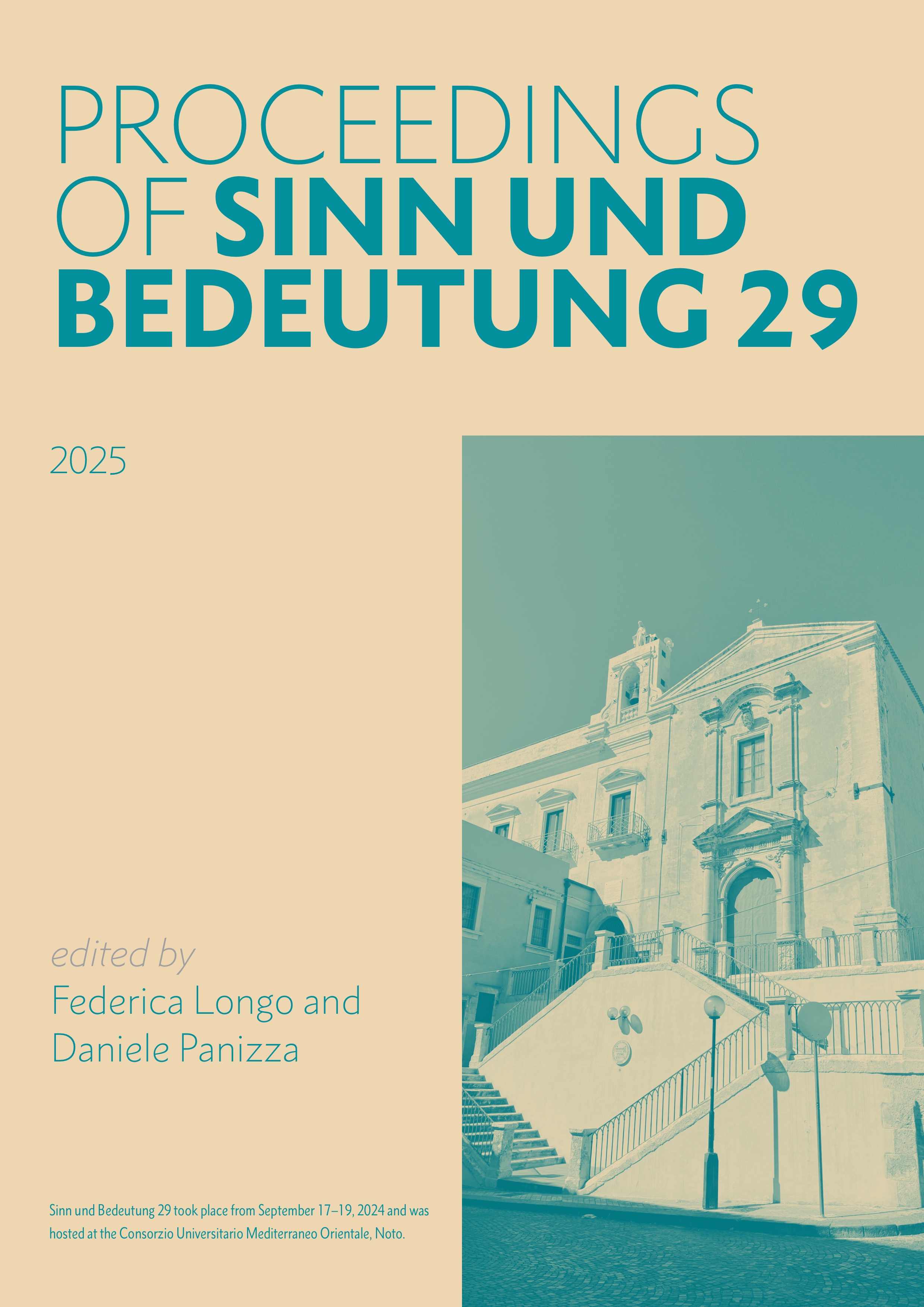Clause-internal causal inferences: Evidence from nouns
DOI:
https://doi.org/10.18148/sub/2024.v29.1285Abstract
A substantial body of pragmatics research has explored discourse-level coherence inferences — the links between clauses and even larger units that bind a series of utterances into a narrative. Hobbs (2010) proposed that there are also Clause-internal Coherence (CIC) inferences, such as that in, ‘A jogger was hit by a car,’ where one is likely to infer that the car accident occurred while the jogger was jogging. Recently, Sasaki and Altshuler (2022, 2023) and Yao et al. (2024) have provided experimental evidence that CIC inferences can be drawn between verbs and adjectives. We provide further evidence for CIC inferences, this time between verbs and nouns. Our findings from three ratings studies in English suggest that both deverbal nouns like ‘jogger’ and non-deverbal nouns like ‘widow’ can give rise to causal CIC inferences. This result is significant because it demonstrates the robustness and pervasiveness of CIC inferences, and raises the question of how proposition-like content may be extracted from a nominal element. We propose a formal analysis of CIC inferences with nouns that adopts the key claim of Pure Event Semantics (Schwarzschild, 2024), namely that nouns always describe eventualities. We synthesize this with a core assumption of Segmented Discourse Representation Theory (Asher & Lascarides, 2003), namely that the arguments of coherence relations are eventuality descriptions. We argue that this provides us with at least two pathways to formally model CIC with nouns.Downloads
Published
2025-09-22
How to Cite
Sasaki, K., Rohde, H., & Altshuler, D. (2025). Clause-internal causal inferences: Evidence from nouns. Proceedings of Sinn Und Bedeutung, 29, 1419–1430. https://doi.org/10.18148/sub/2024.v29.1285
Issue
Section
Articles
License
Copyright (c) 2025 Kelsey Sasaki, Hannah Rohde, Daniel Altshuler

This work is licensed under a Creative Commons Attribution 4.0 International License.
https://creativecommons.org/licenses/by/4.0/
